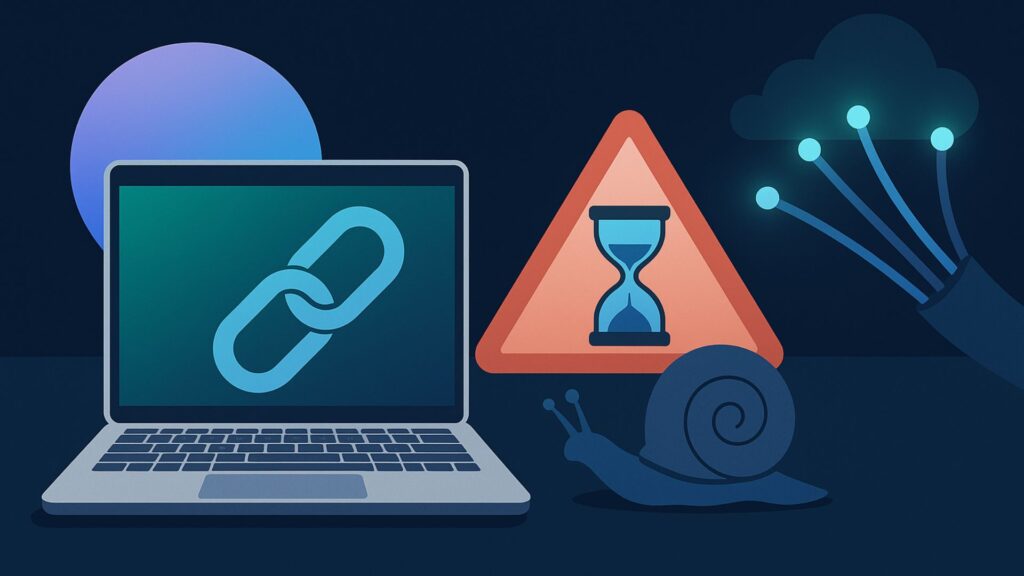The public internet is the invisible force behind every blockchain network. It connects thousands of nodes that need to constantly talk to each other to confirm transactions, maintain consensus, and keep decentralised systems running. While the internet made blockchain possible, it might also be limiting its growth.
According to DoubleZero CEO Austin Federa, the current internet infrastructure is too slow and unreliable to support the kind of speed and scale blockchain needs. Without major improvements, it could stop blockchain from reaching its full potential.
The Internet as a Bottleneck for Blockchain
Blockchain functions as a shared digital ledger maintained by a distributed network of computers, commonly referred to as nodes.
These nodes communicate constantly to validate transactions, confirm asset ownership, and maintain the accuracy of the ledger. All of this communication is made possible through the public internet.
However, the internet was never designed with blockchain in mind. It can be slow, unpredictable, and vulnerable to congestion or outages. These flaws introduce delays that impact transaction speed and network consensus.
High-performance use cases such as real-time financial transactions, online gaming, or AI-integrated platforms are especially sensitive to these delays.
Imagine blockchain as a high-speed train. The internet represents the track it runs on. No matter how advanced the train is, its performance is limited if the track is narrow, damaged, or outdated. In the same way, blockchain systems are limited by the capabilities of the infrastructure they depend on.
The current internet infrastructure struggles to support the scale and complexity that blockchain networks demand. This leads to slower confirmation times, inconsistent network states, and higher risk of communication failures between nodes. These limitations reduce the reliability of the entire ecosystem.
Blockchain systems will not scale properly unless their communication layer is also upgraded. This insight is gaining traction among blockchain infrastructure experts.
Improving internet reliability, increasing data throughput, and reducing latency are all essential to unlocking the next generation of Web3 applications.
DoubleZero’s Vision: A Faster Internet for Blockchain
Austin Federa, formerly Head of Strategy at the Solana Foundation, has taken a clear stance on the infrastructure problem.
He believes blockchain’s performance ceiling is now being determined by the speed and reliability of the internet. This conviction led him to leave Solana in December 2024 and launch DoubleZero, a new project dedicated to building high-speed fibre optic infrastructure tailored for blockchain use.
The goal of DoubleZero is to significantly reduce latency and increase bandwidth. Latency refers to the time it takes for data to travel from one point to another, which directly affects transaction finality.
Bandwidth, on the other hand, determines how much data can be handled at any given moment. Improving both allows blockchain networks to process transactions faster and accommodate more users without congestion.
In April 2025, DoubleZero launched a private token sale for accredited investors and existing validators, those who already operate nodes on networks such as Solana and Sui.
These tokens offer the right to become validators within the DoubleZero ecosystem, which suggests the network will follow a similar structure to the proof-of-stake model.
This move also allows DoubleZero to align with experienced participants who understand blockchain infrastructure and value faster network performance.
The project’s mission, while ambitious, is not without obstacles. One major challenge is adoption. Blockchain-based infrastructure projects need a critical mass of users to be effective.
Without sufficient participation, it becomes difficult to justify further development or to realise the benefits of improved infrastructure.
There is also the issue of misuse. Blockchain systems are attractive for their privacy features, but these same features can make them vulnerable to abuse.
A decentralised internet must find ways to protect privacy while maintaining accountability. This balance remains an unresolved issue for many Web3 projects.
Another challenge is sustaining participation. Blockchain networks rely on individuals and organisations to maintain infrastructure, validate transactions, and contribute resources.
If the rewards are insufficient or the costs too high, participation may decline. Any decentralised system must strike the right balance between economic incentive and operational reliability.
DoubleZero’s approach to solving these problems is unique. Rather than tweaking consensus algorithms or rewriting smart contracts, it is going straight to the core of the problem, network infrastructure.
It is an uncommon approach in a space often dominated by protocol-level innovation. The real question is whether the blockchain world is ready to adopt an entirely new kind of internet built specifically for its needs.
Conclusion
Blockchain technology depends on constant, fast, and reliable communication between thousands of nodes. The public internet, as it stands, is not equipped to support this requirement. DoubleZero’s plan to build a blockchain-specific internet infrastructure is a serious response to this limitation.
With a focus on low-latency, high-bandwidth connections and a validator-based token model, the project aims to provide the backbone Web3 needs.
However, challenges like low adoption, privacy risks, and sustainability still need to be addressed. Whether DoubleZero can overcome these remains to be seen, but its direction signals an important shift in how we think about scaling blockchain.
Editor: Lydicius

